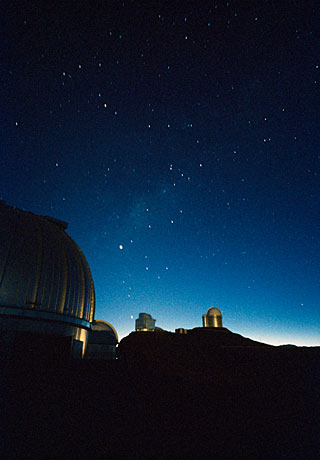50 new exoplanets discovered
September 14, 2011

La Silla Observatory (credit: ESO)
Astronomers have discovered more than 50 new exoplanets orbiting nearby stars, including sixteen super-Earths (planets with a mass between one and ten times that of the Earth).
They used the HARPS spectrograph on the 3.6-metre telescope at ESO‘s La Silla Observatory in Chile, the world’s most successful planet finder.
One of the recently announced newly discovered planets, HD 85512 b, is estimated to be only 3.6 times the mass of the Earth and is located at the edge of the habitable zone — a narrow zone around a star in which water may be present in liquid form if conditions are right.
“In the coming ten to twenty years we should have the first list of potentially habitable planets in the Sun’s neighbourhood. Making such a list is essential before future experiments can search for possible spectroscopic signatures of life in the exoplanet atmospheres,” says HARPS team leader Michel Mayor of the University of Geneva, who discovered the first-ever exoplanet around a normal star in 1995.
HARPS measures the radial velocity of a star with extraordinary precision. A planet in orbit around a star causes the star to regularly move towards and away from a distant observer on Earth.
Due to the Doppler effect, this radial velocity change induces a shift of the star’s spectrum towards longer wavelengths as it moves away (called a redshift) and a blueshift (towards shorter wavelengths) as it approaches. This tiny shift of the star’s spectrum can be measured with a high-precision spectrograph such as HARPS and used to infer the presence of a planet.
The planets found by HARPS are around stars close to the Sun. This makes them better targets for many kinds of additional follow-up observations.